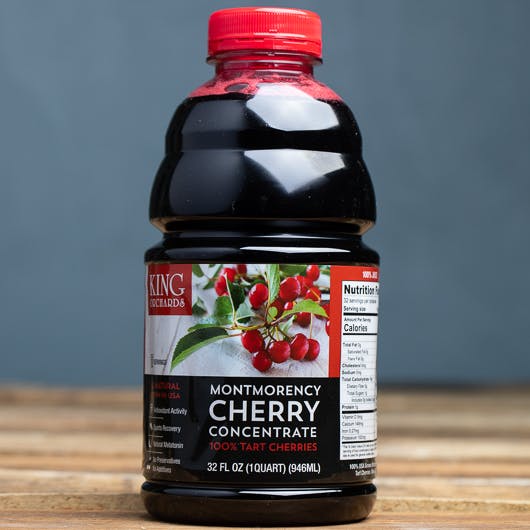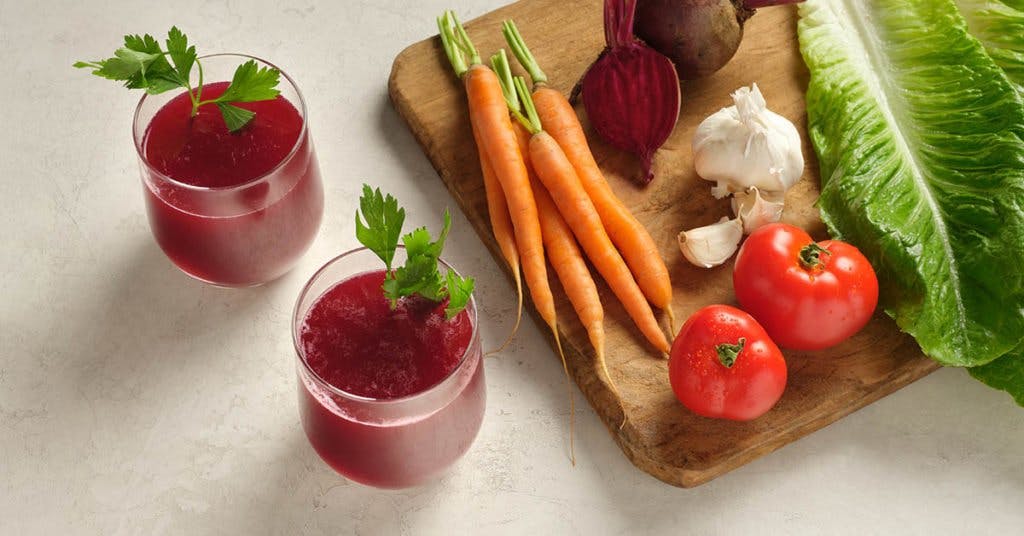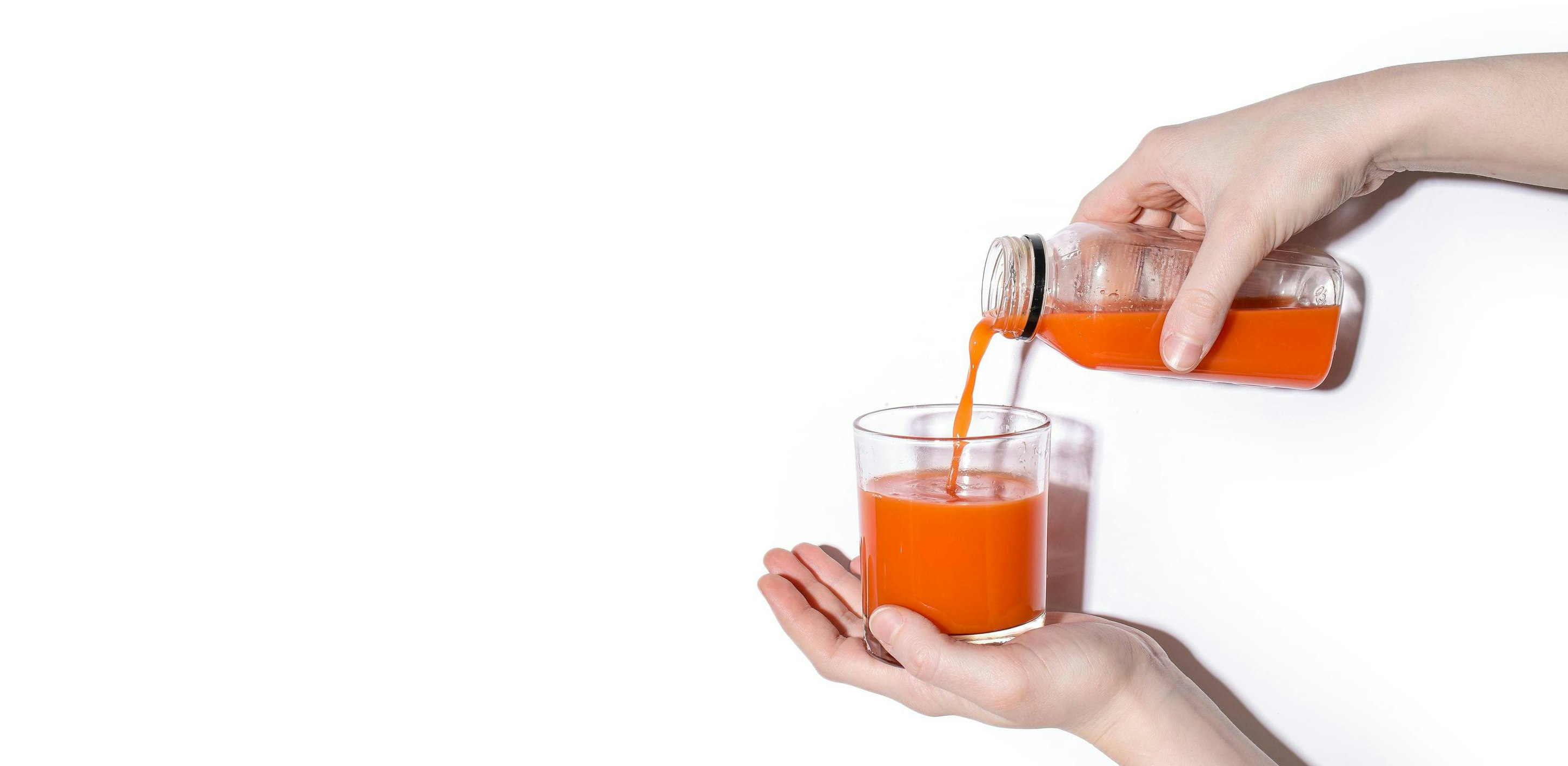Living with diabetes means making smart choices about your diet to keep your blood sugar levels stable. For those who like the refreshing taste of juice, it can be challenging to find the right drink. However, there are options available that not only tantalize the taste buds, but also align with the dietary needs of individuals managing diabetes.
In this article, we explore the world of store-bought juices, identifying seven choices that stand out as excellent options for those seeking flavorful and diabetes-friendly beverages.
We'll also show you what to look for on the labels of grocery store juices, since what's written on the big label on the front isn't always in line with the nutritional info on the back.
From low-carb vegetable blends to refreshing fruit juices, these selections prioritize nutritional value without compromising on taste, offering a satisfying sip for individuals navigating the complexities of diabetes.
Living with Diabetes
According to the Centers for Disease Control and Prevention (CDC), well over 37 million Americans have diabetes.
Diabetes is a chronic illness characterized either by the body's inability to produce sufficient insulin or by its resistance to insulin. Insulin is a hormone that regulates blood sugar levels, and without proper function, it can result in abnormal blood sugar levels.
Diabetes is mostly managed by you, with help from your health care team, family, and other important people in your life. If you have diabetes, it's essential to work with your healthcare provider, who will determine your daily sugar intake, and help you make adjustments when necessary.
7 Best Store Bought Juices For Diabetes
Managing type 2 diabetes can be difficult, but whatever you do to improve your health with this condition is worth it. By adding the following healthy juices to your daily routine and watching your carbohydrate intake, you can enjoy the benefits of fruit juices while keeping your diabetes under control.
Note the information about the sugar content per 8-ounce cup, and the Glycemic Index (GI) and Glycemic Load (GL) per 100g of each juice is specified, with further information about it further down.
#1. Tart Cherry Juice
Research suggests drinking sour cherry juice boosts insulin production and slows down the rate at which blood sugar levels rise after eating. According to a 2017 study, researchers found that sour cherries contain high levels of anthocyanins, pigments found in cherries that give them their red color, and possess properties that stimulate the release of insulin.

Nutritional Characteristics of Tart Cherry Juice
- Sugar per 8-ounce cup: 24 g
- Glycemic Index: 22
- Glycemic Load: 2 per 100 g
#2. Celery Juice
Celery juice is a low-calorie option rich in many nutrients that can help manage diabetes. Celery is a source of phytochemicals that are known to aid in lowering blood pressure and regulating blood sugar levels. These plant hormones strengthen the pancreas, making it especially helpful for people with type 1 diabetes. The glycemic index of celery juice is very low, which is important for blood sugar control.
Nutritional Characteristics
- Sugar per 8-ounce cup: 3.6 g
- Glycemic Index: 15
- Glycemic Load: 0.3 per 100 g
#3. Pomegranate Juice
Pomegranate juice is not only one of the best juice options for diabetes, but also a nutritious choice packed with antioxidants, vitamin C, fiber, folate, and potassium, all essential for your health.
Despite the sweetness of pomegranate juice, the sugars do not raise blood sugar levels, which is great news for anyone suffering from diabetes.
Compared to most other juices, pomegranate juice has a low glycemic index (GI), which means it doesn’t cause a rapid increase in blood sugar levels.
Nutritional Characteristics
- Sugar per 8-ounce cup: 9 g
- Glycemic Index: 53
- Glycemic Load: 5 per 100 g
#4. Apple Juice
Individuals with diabetes can benefit from drinking apple juice. Although it contains sugars, the GI of apple juice is relatively low, meaning it does not significantly impact blood sugar levels.
Therefore, incorporating apple juice into a balanced diet could be a practical choice for those looking to manage their blood sugar levels effectively. However, it should be consumed in moderation.
Nutritional Characteristics
- Sugar per 8-ounce cup: 24 g
- Glycemic Index: 40
- Glycemic Load: 6 per 100 g
#5. Tomato Juice
Studies suggest that tomato juice may help prevent heart problems in type 2 diabetics due to its blood-thinning properties. Heart disease and stroke are two of the most dangerous conditions that come with type 2 diabetes. Diabetes increases the risk of plaque buildup in the blood vessels, which leads to a condition called atherosclerosis, which causes an increase in blood pressure (hypertension).
(We have an amazing homemade V8 juice recipe here, pictured below.)

Tomato juice extract has been shown to improve blood pressure and low-density lipoprotein (LDL) cholesterol, which may help people with type 2 diabetes avoid cardiovascular issues.
Nutritional Characteristics
- Sugar per 8-ounce cup: 6 g
- Glycemic Index: 35
- Glycemic Load: 1 per 100 g
#6. Carrot Juice
The low sugar content of carrot juice makes it a safe and healthy choice for people with diabetes, preventing sudden spikes in blood sugar. Carrots are naturally sweet and contain carbohydrates, including sugar. However, they also provide important nutrients such as beta-carotene, which the body converts into vitamin A. Even though it has some sugars, it is a good addition to a diet for people with diabetes.
Nutritional Characteristics
- Sugar per 8-ounce cup: 9 g
- Glycemic Index: 43
- Glycemic Load: 2 per 100 g
#7. Strawberry Juice
Strawberries have been called a superfood for people with diabetes because of their high nutrient content. Strawberry juice can be a good addition to the diet for people with diabetes. They contain a range of nutrients and antioxidants that support overall health and blood sugar management.Due to their low GI, strawberries have relatively minor effects on blood sugar when consumed in moderation.
A 2019 Study concluded the following: “Overall, from existing evidence, dietary berries, especially taken as fresh or frozen fruit, or as unsweetened juices or purées, may be recommended as part of a healthy dietary strategy for diabetes prevention and management.”
Nutritional Characteristics
- Sugar per 8-ounce cup: 9 g
- Glycemic Index: 40
- Glycemic Load: 6 per 100 g
Hidden Sugar, Glycemic Index, and Glycemic Load
While you may be disciplined in reading the labels of packaged food, it is always a challenge to identify hidden sugars and additives in store bought juices.
Sugar impacts your blood sugar, even when it's called “natural sugars,” and for those living with diabetes, added sweetness can be life-threatening.
All sugars are broken down into fructose and glucose, both of which are part of “100% pure juices.”
Glucose provides energy for every cell in the body, while fructose must be metabolized by the liver, where it is turned into triglycerides. Triglycerides are a type of fat that increases insulin resistance, and stimulates the production of more insulin. Additional fructose is often added to juices, but too much over a long period of time can cause complications like fatty liver.
Many manufacturers hide the actual sugar content in juices behind the following names:
- High fructose corn syrup
- Honey
- Rice Syrup
- Maltose
- Sucrose
- Fructose
- Molasses
- Agave nectar
- Artificial sweeteners like Aspartame, Acesulfame-K, Saccharin, and Sucralose.
Glycemic Index and Glycemic Load
The glycemic index (GI) and glycemic load (GL) reflect the body's responses to different carbohydrate-rich foods. This glycemic concept is particularly relevant for individuals managing conditions like diabetes or those looking to regulate their blood sugar levels.
Glycemic Index: The GI is a rating system for foods containing carbohydrates. It is a measurement that ranks foods on a scale from 0 to 100. Foods with a high GI are rapidly digested and absorbed, resulting in a rapid rise in blood sugar.
- Low GI: 55 or less
- Medium GI: 56 to 69
- High GI: 70 or higher
Glycemic Load: In simple terms, GL is a measure that combines the quality and quantity of carbohydrates in a specific food item, giving a more accurate picture of how it affects blood sugar levels. GL is calculated by multiplying the GI and carbs per serving, and then dividing the result by 100. The higher the GL, the higher the impact on blood sugar.
- Low GL: 10 or less
- Medium GL: 11 to 19
- High GL: 20 or higher
Unfortunately, few manufacturers include GI and GL counts in the nutritional information on product labels. However, there are several apps available for this.
Look Out for Misleading Label Information
Marketing companies know how to get you to reach for a product without feeling the need to study the labels. The information on the smaller labels at the back of the container often tells a different story than the “catch words” on the front label.
Here are a few examples to look out for if you want to avoid unintentionally buying juices that can harm your blood sugar levels:
- The words “Diet,” “Low-Sugar,” or “Sugar-Free” on the label usually means that the juice has artificial sweeteners, and even if they don't add calories, they aren't nutritious, and the artificial taste is obvious with each sip.
- Avoid any juice product labeled as a cocktail, blend, beverage, or drink, as they frequently contain very little juice and plenty of artificial flavors and colorants.
- “100% pure juice” tells you very little about the product. For example, if you want pure carrot juice, you want to see “100% Pure Carrot Juice.” If the type of juice is not specified, you’ll probably find the ingredients label shows a small percentage of carrot juice, with concentrates of several other high-sugar 100% pure fruit or vegetable juices comprising the rest.
- Even if the label says, “No Added Sugar,” check for those we listed above.
- Furthermore, what if the big letters on the front label said, “50% Less Sugar,” or “50% Less Calories,” to catch your eye? Have you ever wondered: 50% less than what? That is a statement that says absolutely nothing and is used solely for the purpose of getting you to grab it off the store shelf.
- The most important information for anyone with diabetes is the sugar and carbohydrate content, while dietary fiber in the juice is a bonus. However, make sure you check the serving size those numbers apply to. Whether you’re buying a gallon or an 8-ounce juice box, the ingredients might be listed per 100-gram serving, which is only about 3 ounces.
These are but some tricks of the trade. You’ll likely find many more now that you’re aware of the importance of reading the ingredient and nutrition labels of store bought juices for diabetes.
Conclusion
When living with diabetes, choosing the right juice requires a blend of taste, nutrition, and mindful choices. The seven store-bought juices highlighted in this article exemplify options that cater to the needs of individuals managing diabetes, providing a refreshing beverage without spiking blood sugar levels.
Remember, moderation is key, and it's always wise to consult healthcare professionals or dietitians for personalized advice. By drinking these diabetes-friendly juices, you can enjoy the goodness of nature while taking care of your health and well-being.
Cheers to a flavorful journey that supports both your taste preferences and your commitment to diabetes management.


Comment